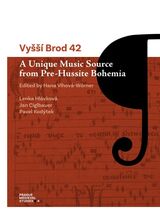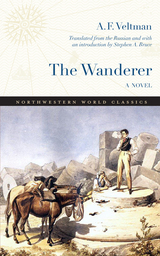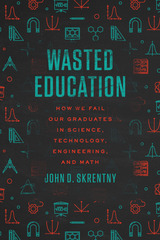3 books about Searcy, Michael T.

Archaeological Structuration
A Critical Engagement for the Twenty-First Century
Michael T. Searcy
University of Arizona Press, 2025
Archaeological Structuration is a critical analysis of the theory of structuration and its utility in the study of societal development over deep time. Structuration theory was originally developed by Anthony Giddens in sociology and adopted piecemeal into archaeology. This book takes a closer look at its contributions to new materialism and develops novel ways to operationalize the theory in archaeological research in the twenty-first century.
To illustrate the usefulness of structuration theory, archaeologist Michael T. Searcy deploys it to uncover new understandings of ancient societies, particularly focusing on the Casas Grandes civilization in precolonial northern Mexico. Spanning more than seven hundred years, this society exemplifies the rise of social complexity in the Western Hemisphere. Searcy reexamines previous hypotheses about major structural shifts during the twelfth and thirteenth centuries CE, providing fresh insights and updated perspectives.
This book not only revisits the foundational influence of structuration theory but also introduces new methodologies to study the longue durée, the long-term historical trajectories of ancient societies. Searcy deftly bridges the gap between theoretical frameworks and practical archaeological applications, providing a thorough analysis of how structuration can address real-world problems through the lens of ancient societal transformations.
To illustrate the usefulness of structuration theory, archaeologist Michael T. Searcy deploys it to uncover new understandings of ancient societies, particularly focusing on the Casas Grandes civilization in precolonial northern Mexico. Spanning more than seven hundred years, this society exemplifies the rise of social complexity in the Western Hemisphere. Searcy reexamines previous hypotheses about major structural shifts during the twelfth and thirteenth centuries CE, providing fresh insights and updated perspectives.
This book not only revisits the foundational influence of structuration theory but also introduces new methodologies to study the longue durée, the long-term historical trajectories of ancient societies. Searcy deftly bridges the gap between theoretical frameworks and practical archaeological applications, providing a thorough analysis of how structuration can address real-world problems through the lens of ancient societal transformations.
[more]
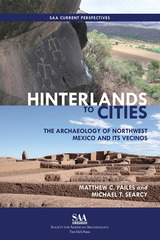
Hinterlands to Cities
The Archaeology of Northwest Mexico and Its Vecinos
Matthew C. Pailes
University Press of Colorado, 2022
This approachable book in the SAA Press Current Perspectives Series is a comprehensive synthesis of Northwest Mexico from the US border to the Mesoamerican frontier. Filling a vital gap in the regional literature, it serves as an essential reference not only for those interested in the specific history of this area of Mexico but western North America writ large. A period-by-period review of approximately 14,000 years reveals the dynamic connections that knitted together societies inhabiting the Sea of Cortez coast, the Sonoran and Chihuahuan Deserts, and the Sierra Madre Occidental. Networks of interaction spanned these diverse ecological, topographical, and cultural terrains in the millennia following the demise of the megafauna. The authors provide a fresh perspective that refutes depictions of the Northwest as a simple filter or conduit of happenings to the north or south, and they highlight the role local motivations and dynamics played in facilitating continental-scale processes.
[more]
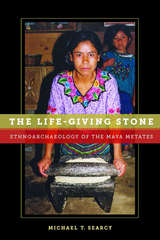
The Life-Giving Stone
Ethnoarchaeology of Maya Metates
Michael T. Searcy
University of Arizona Press, 2011
In The Life-Giving Stone, Michael Searcy provides a thought-provoking ethnoarchaeological account of metate and mano manufacture, marketing, and use among Guatemalan Maya for whom these stone implements are still essential equipment in everyday life and diet.
Although many archaeologists have regarded these artifacts simply as common everyday tools and therefore unremarkable, Searcy’s methodology reveals how, for the ancient Maya, the manufacture and use of grinding stones significantly impacted their physical and economic welfare. In tracing the life cycle of these tools from production to discard for the modern Maya, Searcy discovers rich customs and traditions that indicate how metates and manos have continued to sustain life—not just literally, in terms of food, but also in terms of culture. His research is based on two years of fieldwork among three Mayan groups, in which he documented behaviors associated with these tools during their procurement, production, acquisition, use, discard, and re-use.
Searcy’s investigation documents traditional practices that are rapidly being lost or dramatically modified. In few instances will it be possible in the future to observe metates and manos as central elements in household provisioning or follow their path from hand-manufacture to market distribution and to intergenerational transmission. In this careful inquiry into the cultural significance of a simple tool, Searcy’s ethnographic observations are guided both by an interest in how grinding stone traditions have persisted and how they are changing today, and by the goal of enhancing the archaeological interpretation of these stones, which were so fundamental to pre-Hispanic agriculturalists with corn-based cuisines.
Although many archaeologists have regarded these artifacts simply as common everyday tools and therefore unremarkable, Searcy’s methodology reveals how, for the ancient Maya, the manufacture and use of grinding stones significantly impacted their physical and economic welfare. In tracing the life cycle of these tools from production to discard for the modern Maya, Searcy discovers rich customs and traditions that indicate how metates and manos have continued to sustain life—not just literally, in terms of food, but also in terms of culture. His research is based on two years of fieldwork among three Mayan groups, in which he documented behaviors associated with these tools during their procurement, production, acquisition, use, discard, and re-use.
Searcy’s investigation documents traditional practices that are rapidly being lost or dramatically modified. In few instances will it be possible in the future to observe metates and manos as central elements in household provisioning or follow their path from hand-manufacture to market distribution and to intergenerational transmission. In this careful inquiry into the cultural significance of a simple tool, Searcy’s ethnographic observations are guided both by an interest in how grinding stone traditions have persisted and how they are changing today, and by the goal of enhancing the archaeological interpretation of these stones, which were so fundamental to pre-Hispanic agriculturalists with corn-based cuisines.
[more]
READERS
Browse our collection.
PUBLISHERS
See BiblioVault's publisher services.
STUDENT SERVICES
Files for college accessibility offices.
UChicago Accessibility Resources
home | accessibility | search | about | contact us
BiblioVault ® 2001 - 2025
The University of Chicago Press




